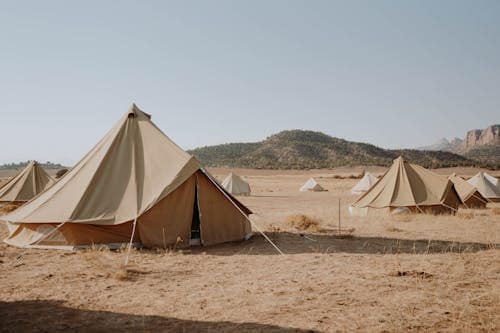Natural fibers for survival gear offer a powerful combination of strength, fire resistance, and sustainability, making them an ideal choice for outdoor adventures and emergency preparedness. Materials like hemp, wool, and flax are trusted by survivalists for their durability in harsh conditions and comfort in extreme weather. Unlike synthetic fabrics, these natural options are breathable, biodegradable, and safer around heat and flame. If you are looking to upgrade your survival gear with eco-friendly choices that perform under pressure, natural fibers are a smart and reliable solution.
Introduction: Why Survivalists Are Turning to Natural Fibers
In survival situations, every tool and material you choose can mean the difference between comfort and crisis. For decades, synthetic fabrics have dominated the market. Today, a growing number of outdoor survivalists, preppers, and eco-conscious adventurers are turning to natural fibers for their durability, breathability, fire resistance, and biodegradability. This guide explores the top-performing natural fibers used in survival gear, comparing them to synthetics and helping you choose the right materials for long-term use and emergency preparedness.
I. What Are the Strongest Natural Fibers for Survival Gear?
When it comes to outdoor survival, strength matters. You need materials that can resist wear and tear, endure harsh conditions, and last for years. The strongest natural fibers for survival gear are valued for their toughness, versatility, and performance in rugged environments.
A. Here are the top contenders:
1. Hemp
- Known for: Exceptional tensile strength, mold resistance, UV protection
- Best used for: Ropes, backpacks, tarps, utility clothing
- Why it stands out: Hemp is one of the strongest natural plant fibers available. It holds up under strain, dries quickly, and resists rot, making it ideal for wet or unpredictable climates.
2. Linen (from flax)
- Known for: Lightweight strength, breathability, quick drying
- Best used for: Shirts, inner layers, hot-weather survival wear
- Why it stands out: While not as thick as hemp, linen has a high fiber strength-to-weight ratio and is naturally antibacterial, perfect for staying fresh and cool off-grid.
3. Wool (especially Merino wool)
- Known for: Insulation, flame resistance, moisture-wicking
- Best used for: Base layers, socks, gloves, insulating clothing
- Why it stands out: Wool is tough, warm, and functional even when wet. Merino wool adds softness and comfort, making it a favorite for long-term survival clothing.
4. Cotton Canvas (especially duck canvas)
- Known for: Thick weave strength, durability, versatility
- Best used for: Tents, packs, jackets in dry climates
- Why it stands out: While regular cotton is not ideal for survival, tightly woven canvas versions offer excellent resistance and longevity when properly cared for.
B. Expert Tip:
Hemp and wool are often blended with other fibers to combine strength, flexibility, and fire resistance, ideal for extreme survival environments.
III. How Do Natural Fibers Compare to Synthetics in Survival Scenarios?
When choosing survival gear, many people automatically reach for synthetics like polyester, nylon, or acrylic. While these materials have their place, natural fibers offer distinct advantages that can make a big difference in off-grid or emergency situations.
A. Here’s how they compare across key survival-related factors:
Natural Fibers vs. Synthetics: Feature-by-Feature Comparison
|
|---|
B. What Survivalists Should Know
- Natural fibers are safer around fire, more breathable in extreme conditions, and better for long-term health and sustainability.
- Synthetics may be lighter and quicker to dry, but often come at the cost of comfort, safety, and environmental harm.
- For the most reliable setup, many survivalists use a blend of natural and synthetic gear, natural fibers for clothing and base layers, and synthetics for lightweight rain gear or accessories.

Hemp canvas tent
IV. Which Natural Fibers Are Best for Specific Survival Gear?
Different types of natural fibers have unique strengths, making them more suitable for certain types of survival gear. Whether you’re preparing for rugged wilderness adventures, emergency situations, or off-grid living, choosing the right fiber can improve your gear’s performance, comfort, and safety.
A. Here’s a breakdown of the best natural fibers for specific survival gear:
1. Backpacks, Straps, and Utility Bags

- Extremely strong and resistant to wear and tear
- Naturally mold- and UV-resistant
- Holds up under heavy loads and tough environments
Also good: Cotton canvas (duck weave) for dry climates
2. Tents, Tarps, and Shelter Covers

- Thick, water-resistant, and durable
- Can be reproofed with natural wax for water resistance
- More breathable than synthetic tarps and does not melt near fire
Also good: Linen canvas in warm, dry weather
3. Outerwear and Jackets

- Hemp is strong, abrasion-resistant, and breathable
- Wool provides natural insulation, even when wet
- Both are safer near flames than synthetics
Also good: Blends like hemp-cotton or wool-hemp for added flexibility
4. Base Layers, Socks, and Undergarments

- Soft, itch-free, and moisture-wicking
- Regulates body temperature
- Resists odor during long-term use
Also good: Linen for hot climates
5. Gloves, Hats, and Insulating Accessories

- Retains warmth even in wet conditions
- Naturally flame-resistant
- Ideal for cold or damp environments
6. First Aid and Multi-Use Fabrics (Bandages, Filters, etc.)

- Gentle on skin and breathable
- Can be boiled for sterilization
- Useful for bandages, slings, or emergency filters
B. Pro Tip:
For gear that needs extra durability, choose tightly woven natural fabrics like duck canvas or hemp twill. For comfort and mobility, stick with lighter fibers like Merino wool or linen.
V. Can You Make Your Own Survival Gear with Natural Fibers?
Yes, you can, and many survivalists, preppers, and off-grid enthusiasts prefer it. Making your own survival gear using natural fibers not only reduces reliance on synthetic materials but also gives you full control over the quality, durability, and sustainability of what you use. Plus, it can be more affordable and incredibly satisfying.
A. Here are some popular DIY survival gear projects using natural fibers:
1. Make Your Own Hemp or Cotton Rope
- Twist or braid raw hemp fibers or strong cotton threads
- Use for shelter building, food hanging, or emergency situations
- Hemp is rot-resistant and very strong
2. Sew a Wool or Hemp Survival Poncho
- Choose thick wool or hemp canvas for warmth and weather protection
- Add a hood and optional natural waterproofing with beeswax or lanolin
- Wool offers fire resistance, while hemp resists water and abrasion
3. Create a Waxed Cotton or Linen Tarp
- Use untreated cotton or linen canvas
- Apply beeswax or a natural wax blend to make it water-resistant
- Use as a shelter, ground cover, or rain shield
4. Knit Wool Hats, Gloves, or Socks
- Merino wool yarn is ideal for insulating gear
- Wool stays warm even when wet and naturally resists odor
- Perfect for cold-weather preparedness kits
5. Cut Linen or Cotton for First Aid Supplies
- Use linen or cotton fabric for reusable bandages, wraps, or slings
- Boil or sun-dry for sterilization in off-grid situations
- Lightweight and gentle on the skin
B. Why DIY Natural Gear Makes Sense
- Custom-fit: Tailor gear to your body or needs
- Sustainable: Reuse natural materials or repurpose fabric scraps
- Skill-building: Valuable knowledge for off-grid and survival living
- Non-toxic: Avoid synthetic coatings and microplastics
Even if you are not a master crafter, simple hand-stitching or knotting techniques can get you started. A few basic tools, some durable natural fabric, and the willingness to learn go a long way in building a reliable survival kit.
VI. How to Care for Natural Fiber Survival Gear
Proper care is essential to make your natural fiber survival gear last longer, perform better, and stay safe to use in all kinds of conditions. Unlike synthetics, natural fibers are more breathable and eco-friendlier, but they also need thoughtful maintenance to preserve their strength, flexibility, and resistance to the elements.
A. Follow these simple but effective care tips:
1. Wash Gently and Sparingly
- Hand wash or machine wash on a gentle cycle using cold or lukewarm water
- Use mild, biodegradable soap or natural detergents
- Avoid bleach, fabric softeners, or harsh chemicals that can weaken fibers
Tip: Wool should be washed less frequently, spot-cleaned when possible, and laid flat to dry.
2. Air Dry Whenever Possible
- Avoid high heat from dryers, which can shrink or damage natural fabrics
- Hang gear in the shade or indoors to prevent sun damage and fading
- Wool and cotton items dry best flat to keep their shape
3. Re-Treat for Water Resistance
- Reapply beeswax or natural waterproofing to cotton or hemp tarps, ponchos, or outerwear
- Use lanolin on wool items to restore softness and water-repelling qualities
4. Store in a Cool, Dry Place
- Keep gear away from damp or humid areas to prevent mildew or mold
- Use breathable storage bags (like cotton or linen), not plastic
- Add dried lavender or cedar to deter insects naturally
5. Repair Instead of Replace
- Patch small holes with matching natural fabric
- Reinforce seams or straps with strong thread (hemp or cotton thread is best)
- Regular maintenance prevents minor issues from turning into gear failures
B. Bonus Tip:
Sun and air are your best natural cleaning tools. Hang items in sunlight occasionally to freshen them and naturally kill bacteria, just don’t overdo it with delicate fibers like wool or linen.
Caring for your gear is part of the survival mindset. With just a little upkeep, natural fiber gear can serve you for years, safely, sustainably, and without releasing harmful microplastics into the environment.
Conclusion: The Smart Choice for Survivors and the Planet
Natural fibers aren’t just a nostalgic return to old ways; they’re proving to be the smarter, safer, and more sustainable choice for modern survivalists. With their unique blend of toughness, comfort, and eco-responsibility, natural materials like wool, hemp, flax, and cotton can help you face the elements without harming the planet
Start the habit of choosing natural ingredients in what you eat and use. Try my Free 30-Day Natural Ingredient Swap Challenge.

 Simple. Natural. Better.
Simple. Natural. Better.